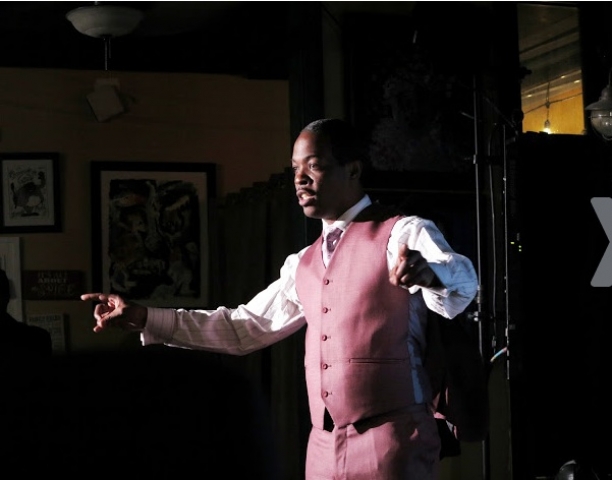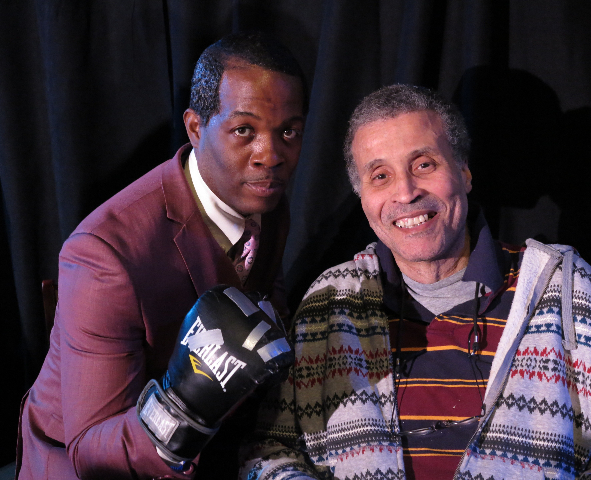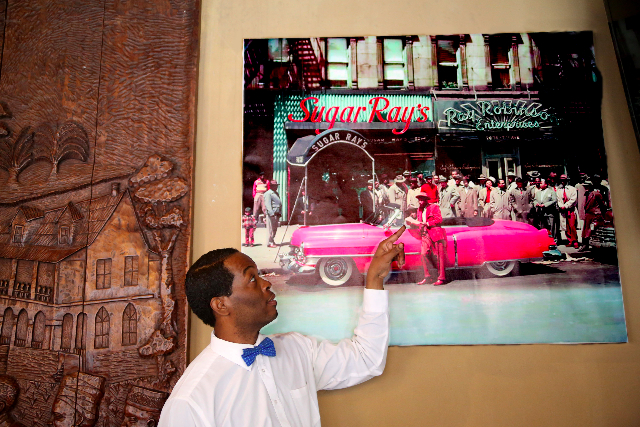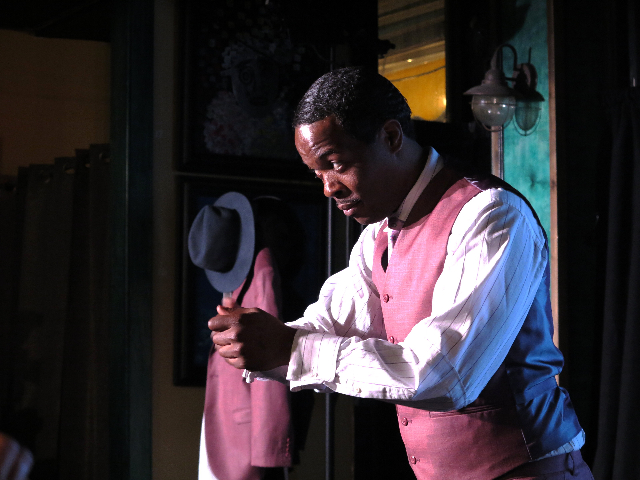Laurence Holder's Sugar Ray
Woodie King, Jr. Directs Reginald L. WIlson
By: Susan Hall - Apr 12, 2016
Sugar Ray
By Laurence Holder
Directed by Woodie King, Jr.
Starring Reginald L. Wilson
Harlem Besame
New York, New York
April 11, 2016
Photos courtesy Jonathan Slaff
Advanced footwork and punching power are brought from ring to stage in Reginald Wilson’s one man show as Sugar Ray Robinson at Harlem Besame. One man show is a misnomer. Woodie King Jr has directed Wilson to perform solo in seamless dialogues with manager George Gainsford, Cassius Clay, and particularly Sugar's tough, loving Mama Leila. The dining theatre venue erupted in affirmative 'Yeses' of recognition as Sugar succumbs to Mama and vice versa.
Robinson was arguably America's greatest boxer. First he fought lightweight. He moved into the middleweight category as he aged.
Wilson embeds these riveting dialogues in a seamless flow of dance steps and quick reversals from offense to defense in his words and rhythms.
Even if you didn't enjoy boxing prior to this performance it was impossible to resist watching Wilson. He moved in a dedicated space across the front of the dining room with grace. He often reached out to the audience, teasing and even pouring water into empty glasses. Nothing was forced.
Props are created in the mind's eye by Wilson. Only boxing gloves, the winner’s belt and a phone are palpable. With hands sketching other props and even a partner at dancing school, Wilson creates the boxing champ’s world over time.
A video of Sugar Ray’s fights was projected above the performance area. Even without this reminder of Robinson, however, you knew exactly what made up this man of incredibly light steps, intelligence and strategic approaches. He often left opponents flat on their backs.
Wilson draws the tactics and strategies that kept his opponents off balance. He psyched Jake LaMotta, the Raging Bull, by ordering a glass of beef blood, uncooked, to drink when they lunched. Sugar fast-stepped the Bull's charges in the ring, delivering stinging jabs. The Bull would not go down. He got his arm wrapped in a ring rope and just took it from Sugar. The thirteenth round of that fight was one of the greatest in boxing history. Wilson draws it with broad strokes and a battering ram.
Although Wilson works a rectangular length of the room, King has drawn the staging as though we were in the ring, making Sugar's life a series of great fights, mostly won. The heart of a talented athlete is delved.
Laurence Holder has captured Sugar's lingo and rhythms. The biographical material does not shy away from Sugar's philandering heart or a detours into drugs. It honestly portrays an athlete who trained to peak performance and was a lively, contributing member of his community.
The site of the show is the same place where Sugar had a cafe, cleaning shop, and his wife's beauty salon. Sugar was a part of Harlem and continues to be.
Johnny Barnes who played Sugar in Raging Bull congratulated Wilson at the conclusion of the play, as did his director, Woodie King, Jr. Wilson was off for a drink at the bar. This charming, intimate venue is perfect for dinner theatre.








